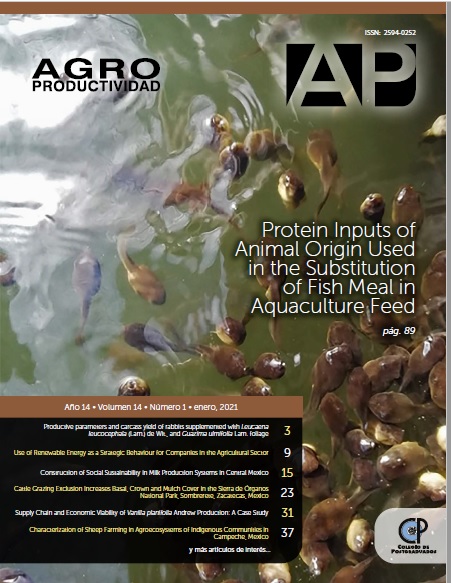Evaluation of the consumption of two integral diets for Psittacines in captivity in a wildlife rescue unit
Main Article Content
Keywords
Parrots, consumption, captivity, alternative diet
Abstract
Objective To evaluate the consumption of nutrient intake in a traditional diet and a proposed diet for parrots in captivity.
Design/methodology/approach The study was carried out in Pachuca de Soto, Hidalgo, Mexico. Twelve parrots were used in captivity. The traditional diet (TD) provided to the birds was evaluated and a proposed diet (PA) was alternative. The consumption and the amount of waste of each diet were recorded for 5 weeks. PA was formulated with fruits, vegetables, and seeds. Data were analyzed by Student's t test to significance of 0.5.
Results TD lacked homogeneity in the ingredients offered during the five weeks of study. There were significant differences in consumption between the 2 diets evaluated. The individual consumption of each bird was 349 g for TD and 314 g for PA. The TD had 41.87% was of fruits and 58.12% of vegetables. The PA included supplementation with seeds. From the second to the fifth week there was less waste in the PA.
Limitations of the study The age, weight, sex and collection of excreta of the parrots were not registered, due to the restriction rules of the conservation area.
Findings/conclusions The PA offered the requirements that parrots need. It is necessary to train technical personnel in the preparation of diets. Feeding frequencies and food diversity stimulated consumption and decreased waste, improving the nutritional balance of birds in captivity.

